|
Semyeong Oh I'm a researcher at the Planetary Atmospheres Group at the Institute for Basic Science in Daejeon, South Korea. Here, I contribute to a CubeSat mission to monitor long-term variability of Venus and do research on planetary atmospheres. Previously, I did my PhD in Astrophysics at Princeton, and was a postdoctoral research associate at the University of Cambridge. I worked on science with comoving pairs and stellar groups through extensive use of ESA's billion star mapper Gaia mission. I also had a year-long stint as a data scientist at a startup leveraging ML/AI in mobile advertising. |
ResearchBroadly speaking, I am interested in coming up with novel ways to extract information from large datasets. I have worked on finding and characterizing binaries and comoving groups in the Solar neighborhood. I was also part of the GaiaUnlimited project to quantify the selection function (sampling bias) of Gaia catalogs. I contributed to the early phase of the project, rehashing earlier works and setting up the python package and its documentation. Currently, I am focused on studying the planetary-scale waves and their connection to super-rotation or mesoscale features in the Venus atmosphere using the Akatsuki mission data. Publication list at Google Scholar / ADS |
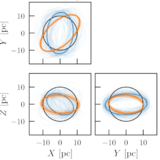 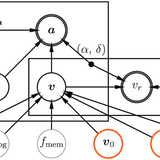
|
Kinematic modelling of clusters with Gaia: the death throes of the Hyades
Semyeong Oh and N. Wyn Evans MNRAS, 2020 With the sub-km/s precision of Gaia astrometry, we can resolve and model the internal kinematics of star clusters. I develop a new method based on principled Bayesian inference to model clusters more generally while simultaneously accounting for imperfect group membership via Gaussian Mixure model. Applying it to Hyades, we find velocity shear and anisotropic velocity dispersion. |
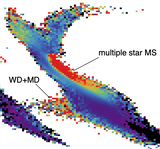
|
Unresolved stellar companions with Gaia DR2 astrometry
Vasily Belokurov, Zephyr Penoyre, Semyeong Oh et al. MNRAS, 2020 What happens when you fit a single-source model to the astrometry of unresolved binaries? They don't fit! Using how bad the fit is as a proxy for binarity, we investigate binary fraction across the color-magnitude diagram, and find a bunch of cool results. |
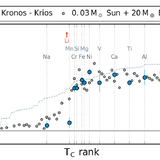 
|
Kronos and Krios: Evidence for Accretion of a Massive, Rocky Planetary System in a Comoving Pair of Solar-type Stars
Semyeong Oh, Adrian M. Price-Whelan, John M. Brewer et al. ApJ, 2018 We found an extraordinary example of rocky planet engulfment by differential chemistry of coeval, comoving pairs. |
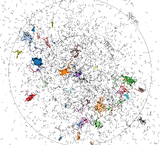 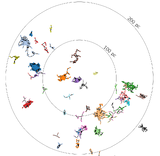
|
Comoving Stars in Gaia DR1: An Abundance of Very Wide Separation Comoving Pairs
Semyeong Oh, Adrian M. Price-Whelan, David W. Hogg et al. ApJ, 2017 Visualization We came up with a novel method to select comoving pairs based on Bayesian model selection. With this and Gaia DR1, we found some new nearby moving groups. |
Other projects |
Teaching |
A short tutorial on Akatsuki mission data |
|
This website is based on the design of Jon Barron's. |